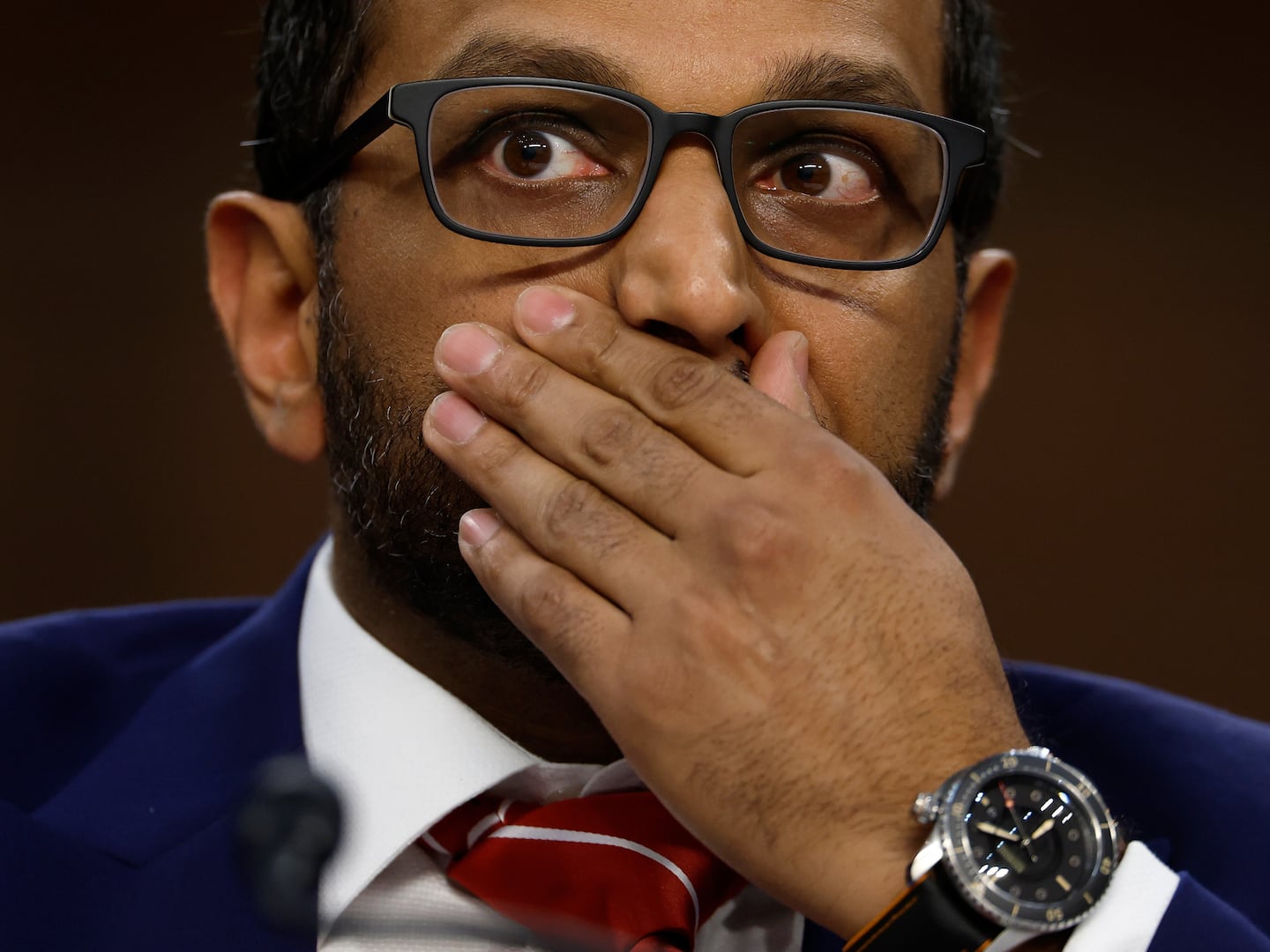
Campus stereotypes have been around as long as college itself. And, usually, these reputations stick no matter what a university—or parent—tries to do about it.
“My favorite was, ‘God, Mom, Hamilton is so Hootie & the Blowfish,’” recalls Meg Gobles, a Brooklyn mother who guided her son through the college admissions process last year. “What does that even mean? And how could I possibly rebut it?”
From Dartmouth’s buttoned-down Republicans to Cornell’s suicidal student body, The Daily Beast investigates the longstanding stereotypes of eight prominent schools to find out just how true they are.
How Gay is Vassar?
Not surprisingly, Vassar College does not track students’ sexual orientation. As a former women’s college located an hour outside New York City, however, it’s no surprise that it tends to attract more open-minded applicants. There are “a good number of gay and lesbian students, particularly gay men,” says Phillipe Kleefield, president of the Queer Coalition of Vassar College. Furthermore, he adds, “A lot of people are more willing to question their sexual orientation on campus and experiment.”
But Kleefield found himself often disappointed by his classmates when it came to supporting gay issues. He estimates his organization had five active members, and when it came to political controversies such as gay marriage, Vassar students rarely got involved. “When you live in a bubble, where you don’t have to interact with people who think differently than you, it’s easy to get a progressive place,” says Kleefield, who graduated in May. “I think Vassar students start to think everywhere is as tolerant, and that just isn’t the case.”
Cornell Makes Students Suicidal
This is one of those urban legends that Cornell administrators would love to make disappear. The school’s isolated location in frigid upstate New York doesn’t help. Nor does the fact that, like most of their Ivy League counterparts, Cornell coeds carry a stressful workload. Not to mention that, over the years, there have indeed been students who have taken their lives by flinging themselves dramatically into the depths of Ithaca’s famous gorges.
But, in reality, Cornell has just one or two suicides each year, consistent with the national average. (Suicide is the second leading cause of death among American college students, after motor-vehicle accidents.) In addition, since 2002, Cornell has put in place several measures to prevent suicides, and only five students have taken their life since then, compared to 11 in the six years prior.
All of Long Island Goes to Wisconsin
This, of course, is not true: Nearly two-thirds of students at Madison are Wisconsin residents. And yet, ask any “Sconnie”—as the natives are known—and you’re sure to hear about the town being overrun by “Coasties,” the not-so-affectionate moniker for students from the East Coast and California. In campus lore, these out-of-state invaders even have a uniform: oversized sunglasses, a North Face jacket, spandex pants, and furry UGG boots—no matter the weather. Oh, and her perpetual orange suntan.
How the University of Wisconsin became a Midwest mecca is a mystery. (After neighboring Illinois, New York sends more college students to Wisconsin than any other state, and California is close behind.) But there’s little doubt that the influx of East and West Coast applications since the early 1990s has brought prestige and money—out-of-state tuition is nearly three times that of in-state. Perhaps as a result, admissions have become more selective as freshman applications rose more than 40 percent from 1989 to 2005.
That fueled some resentment as it got harder for even Wisconsin students to get in. And the Coasties don’t always help their own image, often living in private, off-campus dorms and sticking to their own fraternities and sororities. Tensions have occasionally spilled into the classroom. “A couple of days ago, I was in lecture when a teacher asked if there was anyone from Los Angeles in the class… Upon hearing one student's reply, the professor stated, ‘If anyone needs money, go to this guy—or his parents,’” freshman and New Yorker Skye Kalkstein recounted in the campus paper in 2006. “After another student said she came from Beverly Hills, the professor called her a ‘rich bitch.’”
Everyone at MIT Is a (Male) Lab Rat
Work, friends, sleep: pick two. It’s a student mantra around the Massachusetts Institute of Technology’s Cambridge campus. As one spring 2010 applicant put it, “I know I’ll have to give up girls and fun if I want to go there, but it’s worth it.”
Of course, by design, freshmen go to MIT to study engineering, science, and technology— all traditionally male-dominated fields. But women have attended MIT since 1871 and currently make up about 45 percent of the student body. In addition, there are actually humanities majors at MIT—a whopping 140 in the 2008-2009 school year out of about 4,000 undergraduates.
But a little-known fact is that all MIT students are required to take eight classes in the arts or humanities to graduate. “While the literature department had very few majors, I was by no means alone in the classes,” says Joe Pokora, a dual literature-engineering major who graduated in May.
Penn Is So Jewish
“At Penn, being Jewish is much more than religion. It's the summer camps, the teen tours, the Long Island name game and what fraternity you join.”
That’s how one recent (non-Jewish) grad describes the Jewish culture at the University of Pennsylvania. Penn has long had the rep of being the most Jewish campus in the Ivy League, and its students are the first to confirm it’s warranted. But in fact, only about a quarter of Penn’s student body is Jewish, according the school’s Hillel chapter. Yale rivals (and, some years, exceeds) that proportionally, and most of the country’s elite universities aren’t far behind. All offer Shabbat services, kosher dining, and a rich Jewish campus life.
So why does Penn have the rep? In part, it’s probably due to the school’s history. Today, about one-fifth of Ivy League students are Jewish. But, as detailed in sociologist Jerome Karabel’s book The Chosen in the 1920s, the Big Three—Harvard, Yale, and Princeton—began systematically excluding Jews in their admissions processes, a practice that continued into the 1970s. Penn, on the other hand, never discriminated as such. Add in “legacy” admissions, and the university has educated several generations of many prominent Jewish families. “When I was 10, my mother posted a list in our kitchen of all the Nobel Prize winners who graduated from Penn,” says one Jewish alumna. “But she was much more impressed when one girl on my hall was a Lauder and another was related to the Guggenheims.”
You Can Major in Anything at Bennington
Physics and the Role of Science in Wartime Technology. Democracy in Developing Countries. Bio-Chemistry of Freshwater Newts. These are just a few of the fields of study Bennington College advertises to potential applicants. The small liberal-arts college in bucolic Vermont has long had a reputation for its open academic structure that even includes optional grades.
It is an oversimplification, however, to say Bennington has no requirements. Yes, students design individual learning programs, but faculty must sign off on their plans. That said, students are then largely to left to direct their own studies—a tradition Bennington grads are quite proud of. “Your imagination, your intellect, your discoveries are cultivated and increasingly govern your educational life at Bennington in place of the imposition of external templates designed by others,” brags the school’s Web site.
Berkeley Is All Asians
By the numbers, the stereotype seems justified: At 46 percent, students who identified as ethnically Asian made up the largest proportion of the freshman class in the fall of 2008. Caucasian students accounted for about one-third and other racial group about 15 percent. And because 85 percent of Berkeley’s student body is California residents, this figure can’t be chalked up to the state’s racial breakdown—only about 13 percent of Californians are Asian or Pacific Islander and three-quarters are white.
Instead, what Berkeley’s demographics show is the effect affirmative action can have on college admissions. In 1996, California voters passed Proposition 209, which amended the state constitution to bar public colleges from considering race in admissions. Since the new law, Asian enrollment at Berkeley and other UC campuses has skyrocketed.
That could soon change. This past spring, the UC Board of Regents approved a new admissions process that, it hopes, will give schools more leeway in whom they admit. While the new policy doesn’t explicitly mention race or ethnicity, at least one university-sponsored analysis suggests that the number of Asians accepted will slightly decrease. The same study found that black and Hispanic applicants will remain even and white enrollment would see a boost.
First, however, the policy will have to get past both California’s active Asian community, which has protested the new regime, as well as proponents of Proposition 209. One such watchdog, Ward Connerly, a black conservative businessman, wrote in a June op-ed, “The net effect of these changes is that academic achievement will be less significant and UC admissions administrators will have the ‘flexibility’ to discriminate against those allegedly ‘dull’ Asians.”
Everyone at Dartmouth is a Republican
Dartmouth College has long been known as the most conservative Ivy. Some students think the label stems from the fact that Dartmouth was the second-to-last Ivy to admit women in 1972. Others point to the Dartmouth Review, the school’s prominent conservative newspaper, which spawned right-wing commentators Laura Ingraham and Dinesh D'Souza.
In reality, says Harrison Davies, spokesman for Dartmouth’s College Republicans, “I'm still surprised that Dartmouth continues to be labeled as a ‘conservative’ school. On campus, you'd be hard pressed to find a student who shares that belief—I certainly do not.” Davies estimates that his organization has about 300 students on its member list, while the College Democrats have about 1,000. He adds, “In my experience, when the College Republicans host high-profile speakers, a large percentage of the crowd are there to challenge the speaker's points.”
But that’s not the end of the story. While Dartmouth students may not dabble in partisan politics, the board of trustees might. In an unusual setup, alumni elect half of the 18-member board while the board itself appoints the other half. Historically, such elections were uneventful. But starting in 2004, several more conservative alumni have beaten out establishment candidates. New trustees include Peter Robinson, a former Ronald Reagan speechwriter and Hoover Institution fellow; Stephen Smith, a University of Virginia law professor who clerked for Clarence Thomas; and Todd Zywicki, a George Mason law professor.
Of Robinson and Zywicki, 1980 grad Susan Ackerman wrote in 2005, “Both petition candidates, in short, seem to me to long nostalgically for some ‘Dear Old Dartmouth’ of the past, without admitting the idealized past they crave represents a Dartmouth that was often hard on women, gays and lesbians, and minorities; monolithic in terms of its social life; and fostered an anti-intellectual environment.”
Kathleen Kingsbury is a writer based in New York. She's a contributor to Time magazine, where she has covered business, health and education since 2005.






